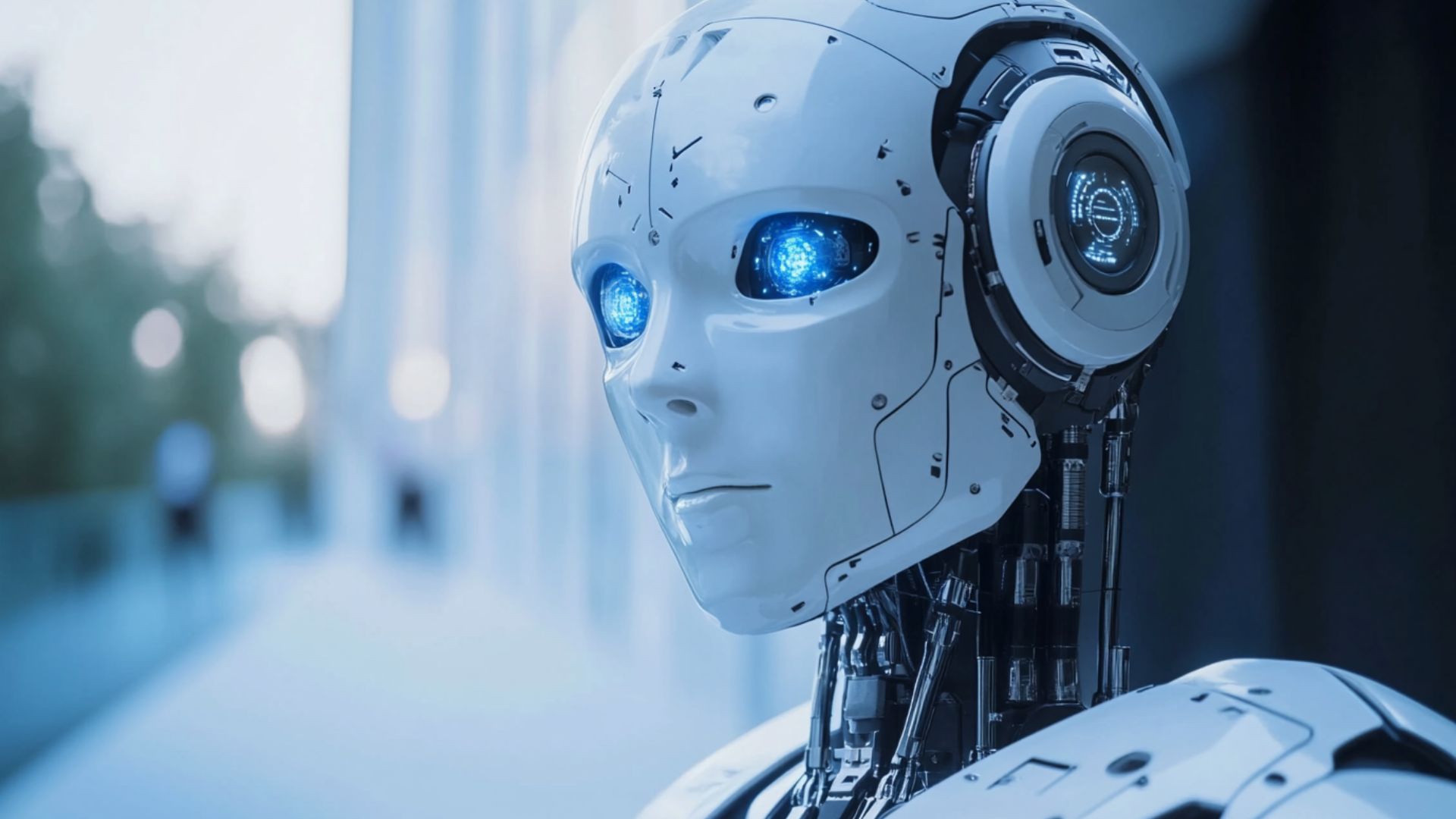How to Train AI Chatbots: A Practical AI Chatbot Tutorial for Beginners and Businesses

In today's digital world, AI chatbots have become essential tools for businesses and individuals alike. They automate tasks, answer questions, and provide instant support. But their effectiveness depends on one key factor: their training and understanding how to train AI chatbots.
Training transforms a simple script into an intelligent assistant. It involves teaching an AI model to comprehend human language, recognize intent, and generate relevant responses. Think of it like teaching a child - you provide examples and feedback until they can handle new situations independently. For a chatbot, this means feeding it vast amounts of data and refining its algorithms through testing and iteration. The quality of training directly determines whether your chatbot becomes a valuable business asset or a source of customer frustration. Well-trained chatbots can understand context, handle complex queries, and provide personalized responses that feel natural and helpful. Poor training results in rigid, unhelpful interactions that damage customer relationships and waste resources.
This article is your comprehensive guide on how to train an AI chatbot. We'll provide a practical and accessible walkthrough for everyone. Whether you're a beginner building your first chatbot or a business looking to improve customer service, this guide covers everything you need. We'll explore the basics of chatbot training, necessary tools, and data requirements, and provide a step-by-step tutorial. We'll also cover real-world applications that demonstrate the power of a well-trained chatbot.
Understanding Chatbot Training and Learning Basics
At its core, chatbot training is the process of making it smarter and more capable. A simple, rule-based chatbot operates on a set of pre-programmed commands. For example, when a user says "Hello," the bot responds with "Hi there!" This works for very basic interactions but fails with more complex or unexpected queries.
This is where the concept of chatbot learning becomes crucial. Unlike rule-based chatbots, AI chatbots learn from data using machine learning algorithms. They use Natural Language Processing (NLP) to break down user input and analyze its meaning. The system then identifies the user's intent (such as "I want to track my order") and extracts key information. The more training data it receives, the better it becomes at recognizing patterns and providing accurate responses.
The distinction between "training" and "learning" is subtle yet important for comprehending the process. AI chatbot training is the deliberate, structured effort you put into preparing data and feeding it to the model. Chatbot learning is the result - the internal process by which the AI model updates its understanding based on that data. Training is essential for moving from a simple rule-based bot to a self-learning AI chatbot. This journey from basic to intelligent functionality unlocks a chatbot's full potential and business value.
Preparing for AI Chatbot Training: Data, Tools, and Setup

Before you can begin training an AI chatbot, you need to lay the proper groundwork. This involves gathering the right tools, preparing high-quality data, and defining clear objectives for your project.
First, you need a reliable platform that matches your technical skills and budget. Many excellent chatbot builder platforms exist today. They range from user-friendly, low-code options, such as Newo.ai and ManyChat, to more powerful, open-source frameworks like Rasa. The choice of platform depends on your technical skill level, budget constraints, and the complexity of the chatbot you want to build. Consider factors like ease of use, scalability, integration capabilities, and ongoing support when making your decision. Some platforms offer free tiers for small projects, while enterprise solutions provide advanced features for larger organizations.
Next, you need quality data - this is the most critical component of successful chatbot training data pricing. The quality and quantity of your training data directly impact your chatbot's performance and user satisfaction. Your dataset should include example conversations, frequently asked questions (FAQs), and real customer queries from various channels. For many businesses, collecting this data internally from customer support logs and email interactions is the first step. Start by gathering at least 100-200 examples for each intent you want your chatbot to handle. More data generally leads to better performance, but quality matters more than quantity. Clean, relevant, and diverse data will produce better results than large amounts of poor-quality information.
Finally, define your goals clearly before starting the training process. What is the primary purpose of your chatbot? Is it to answer customer support questions, generate leads, help with internal HR queries, or provide product recommendations? Having clear objectives will guide your data collection and training process, ensuring you focus on the most relevant information.
Types of Data Used in Chatbot Training
To understand how to train an AI chatbot effectively, you must be familiar with the various types of data available:
- Conversation Logs. These are records of actual conversations between customers and human agents. They're goldmines of data that show exactly how real users ask questions and communicate. These logs capture natural language patterns, common phrases, and the flow of typical customer interactions.
- FAQs and Knowledge Bases. Your existing FAQ pages and knowledge base articles are perfect for creating structured training data. You can transform them into question-and-answer pairs that chatbots can easily learn from. This data is typically well-organized and covers the most common customer inquiries your business receives.
- Customer Queries and Support Tickets. These documents contain the raw, unedited questions your customers actually ask. They're invaluable for training a chatbot to handle real-world language, including slang, misspellings, and fragmented sentences. This type of data helps your chatbot understand how people naturally communicate when seeking help.
- Synthetic Data. When you don't have enough real data, you can create synthetic data instead. This involves generating new, realistic conversation examples based on existing patterns and common scenarios.
Choosing the Right Chatbot Training Platform
Selecting the right platform for AI chatbot training is a critical first step in your journey to train a successful chatbot:
- For Beginners. Platforms like Dialogflow by Google and Microsoft Bot Framework are excellent starting points. They offer visual interfaces, pre-built models, and gentle learning curves that make development accessible. These are often referred to as low-code or no-code platforms, making them ideal for individuals or small businesses without dedicated development teams. Most beginner platforms provide templates and guided tutorials to help you get started quickly.
- For Businesses and Advanced Users. Enterprise-level platforms and open-source frameworks provide more flexibility and control over the development process. Rasa, for instance, requires more technical expertise but allows for deep customization and deployment on private servers. These platforms are better suited for complex, large-scale projects that require custom integrations and advanced logic. Enterprise solutions often include advanced analytics, A/B testing capabilities, and sophisticated natural language understanding features. They also offer enhanced security controls and compliance features for regulated industries, such as healthcare and finance.
The selection process should always weigh your budget, scalability requirements, and technical capabilities.
Step-by-Step Tutorial: How to Train an AI Chatbot

Here is a practical, step-by-step workflow how to train a chatbot:
- Define Your Chatbot's Goals. Be crystal clear about what you want your chatbot to achieve before writing any code or uploading data. Is its main function to answer questions about shipping times, qualify leads through targeted questions, or provide technical support? Clarity here prevents wasted effort and ensures focused development that delivers real business value.
- Collect and Clean Your Training Data. Gather all relevant data sources, including conversation logs, FAQs, customer queries, and support tickets. The most crucial step is cleaning this data thoroughly. Remove personally identifiable information (PII), fix typos, standardize language, and ensure consistency across all data sources. Poor-quality data will result in an unreliable chatbot that frustrates users and damages your brand. Create a systematic approach to data cleaning by establishing clear guidelines for formatting, language standards, and content quality. Document your data preparation process to ensure consistency when adding new training data in the future.
- Configure Intents, Entities, and Flows. This is the core of your chatbot training architecture:
- Intents: Create a comprehensive list of user goals. For an e-commerce chatbot, intents include track_order, ask_about_returns, and check_stock.
- Entities: Identify key pieces of information within user queries. For a track_order intent, the order number is an entity.
- Flows: Map out the conversational paths your chatbot will follow.
- Train the Model. Upload your cleaned, labeled data to your chosen platform. The platform's machine learning model will process this data and build neural networks that recognize the patterns you've provided. This is the moment you are training an AI chatbot and making it smart.
- Test with Real Users. Don't assume your chatbot is perfect after initial training. Deploy it in a testing environment with a small group of real users first. Their feedback is invaluable for identifying gaps in your training data and correcting unexpected responses.
- Optimize Based on Analytics. Utilize your platform's analytics dashboard to monitor chatbot performance continuously. Look for phrases the bot failed to understand or frequent "fallback" responses that indicate confusion. This continuous loop of testing, analysis, and retraining is essential for building a robust and reliable chatbot.
Training AI Chatbots with Real Customer Data
One of the most effective strategies for enhancing AI chatbot performance is training it with real customer conversations. By leveraging data from actual support tickets, chat logs, and customer interactions, your business can ensure the chatbot learns from relevant scenarios. This approach allows the AI to adapt to the specific language, tone, and queries customers actually use.
Real customer data provides contextual information that enables chatbots to understand common pain points, frequently asked questions, and industry-specific terminology, allowing them to respond more effectively. Over time, this results in more natural and effective conversational experiences because the chatbot mirrors actual customer patterns and preferences. Training with real data also helps chatbots understand the emotional context of customer inquiries, enabling them to respond more effectively to users who are frustrated or confused. This leads to higher customer satisfaction rates and more successful problem resolution.
However, training an AI chatbot with real customer data comes with significant responsibilities regarding privacy and security. Before incorporating customer logs into AI training, businesses must prioritize data anonymization to protect sensitive information. This involves stripping out or masking personally identifiable information (PII) such as names, phone numbers, addresses, email addresses, and financial information.
Failing to anonymize data properly risks violating privacy regulations and eroding customer trust. Many platforms provide built-in tools for data cleaning and anonymization, including automated scripts that detect and redact PII. These tools should always be supplemented with rigorous manual reviews to ensure no sensitive data slips through. Establish clear data retention policies and regularly audit your training datasets to maintain compliance. Consider consulting with legal experts to ensure your data handling practices comply with all applicable regulations in your jurisdiction.
Continuous Improvement: Retraining and Iteration
Your work isn't finished after completing the initial AI chatbot training phase. Chatbots are not "set it and forget it" tools that remain effective without ongoing attention. User language evolves, new products are launched, and customer expectations shift constantly.
This is where the cycle of retraining becomes essential for long-term success. Regularly review your chatbot's performance metrics and identify areas for improvement. Look for low confidence scores that indicate the chatbot is unsure of a user's intent. When users are transferred to human agents, analyze those conversations to understand why the chatbot failed to help.
The iterative process of feeding new data, fixing problematic responses, and incorporating user feedback is the most effective way to improve accuracy. This creates a feedback loop that constantly enhances the chatbot's capabilities and ensures it stays aligned with business needs.
Business Applications of AI Chatbot Training

The benefits of training AI bots extend far beyond simple question-and-answer interactions. Businesses can leverage well-trained chatbots for a wide range of valuable applications:
- Customer Support Automation. A well-designed chatbot can effectively handle up to 80% of routine customer queries. This frees up human agents to focus on complex issues that require empathy and problem-solving skills.
- Lead Generation and Qualification. Chatbots can proactively engage website visitors, ask qualifying questions, and capture contact information seamlessly. They can then pass warm, qualified leads to the sales team with relevant context and background information.
- E-commerce Personalization. A trained chatbot can learn customer preferences, browsing history, and purchase patterns to offer personalized product recommendations. This increases conversion rates and customer satisfaction by providing relevant suggestions at the right moments.
- Appointment Scheduling and Management. Chatbots can automate the entire appointment booking process by checking availability, scheduling appointments, sending confirmations, and handling rescheduling requests. This significantly reduces administrative overhead and improves customer convenience. Advanced scheduling chatbots can integrate with calendar systems, send automated reminders, and even handle payment processing for appointments.
These applications demonstrate significant return on investment and operational efficiency gains. Businesses that invest properly in chatbot training can scale their operations without proportional increases in human staff. Studies show that well-implemented chatbots can reduce customer service costs by up to 30% while improving response times and customer satisfaction scores. The key is to start with clear use cases and gradually expand capabilities based on performance data and user feedback.
The Future of Training AI Chatbots: Trends and Challenges
The field of chatbot learning is advancing rapidly, with emerging trends shaping how we'll interact with AI:
- Generative AI in Training. Large language models, such as GPT-4, are now being utilized to generate training data and produce more human-like responses. This development makes it easier to build chatbots that can handle a wider variety of topics with less manual effort.
- Self-Learning AI Chatbots. The future holds truly self-learning AI chatbots that can learn from conversations in real-time, eliminating the need for explicit retraining cycles. This will significantly reduce maintenance overhead and enhance responsiveness to evolving customer needs.
- Multimodal Chatbots. Future chatbots will handle not just text, but also voice, images, and video inputs. This creates more intuitive and rich user experiences that better match how humans naturally communicate.
- Ethical Concerns. As chatbots become more autonomous, ethical considerations around bias, transparency, and data privacy become increasingly critical. Businesses need to ensure their training data is diverse to prevent perpetuating harmful stereotypes.
Training remains the most vital ingredient for creating effective and intelligent AI bots that deliver real business value. Whether you're a beginner following a simple tutorial or a business looking to automate operations, a proactive training strategy is key. Focus on high-quality data, strategic goals, and continuous improvement to build a chatbot that truly understands and assists users effectively.
For businesses, effective chatbot training translates to higher customer satisfaction, reduced operational costs, and significant competitive advantages. For developers, mastering chatbot training opens up career opportunities and innovative projects. As technology becomes more accessible, even small teams can create powerful, intelligent agents. The democratization of AI tools means that businesses of all sizes can now implement sophisticated chatbot solutions. This levels the playing field, allowing smaller companies to compete with larger enterprises on a par with them in terms of customer service quality.
This is an exciting time to be involved in AI chatbot training and deployment today. A smart, well-executed training strategy is your roadmap to success in this rapidly evolving field. Start small, focus on quality, and continuously improve based on real user interactions. The businesses and individuals who invest time and resources in proper chatbot training today will be the ones who reap the greatest rewards tomorrow.


